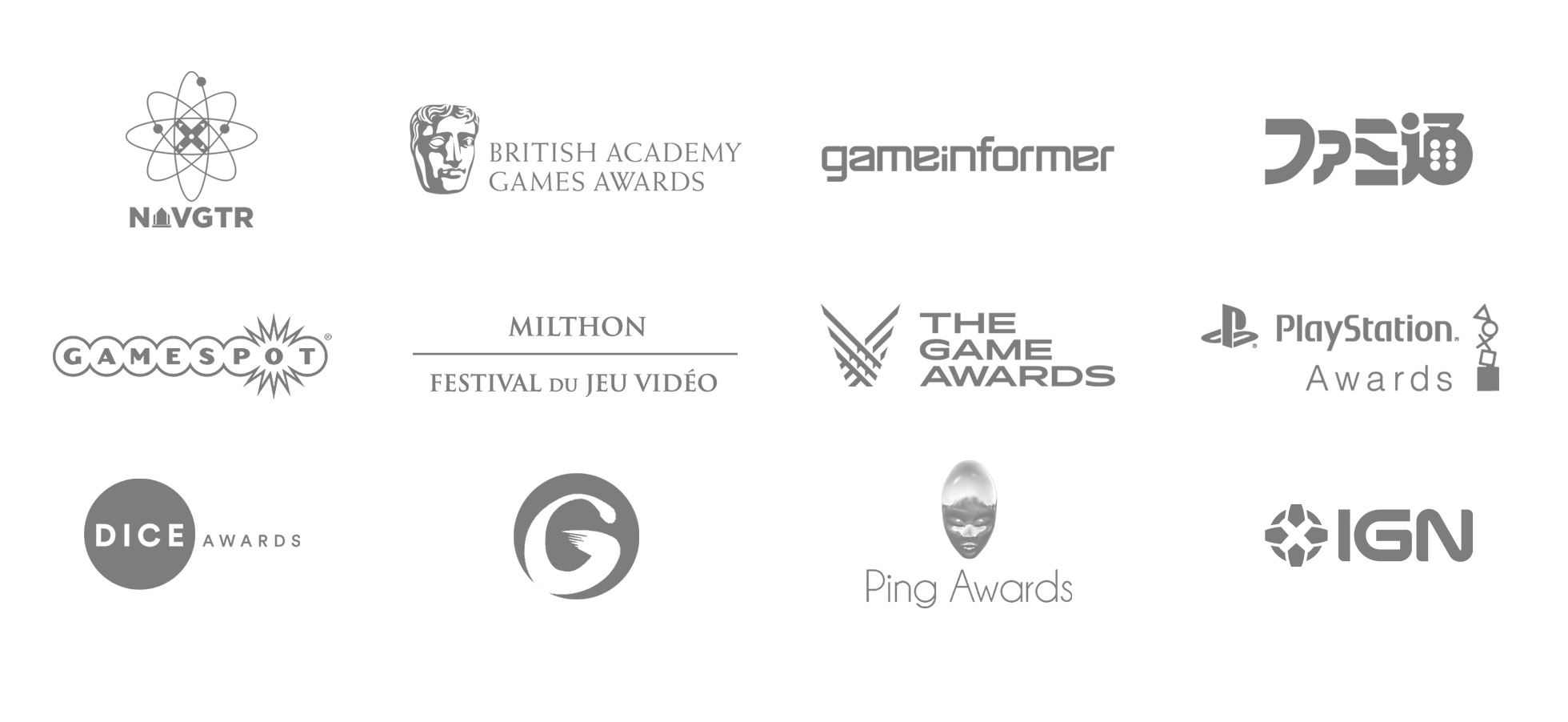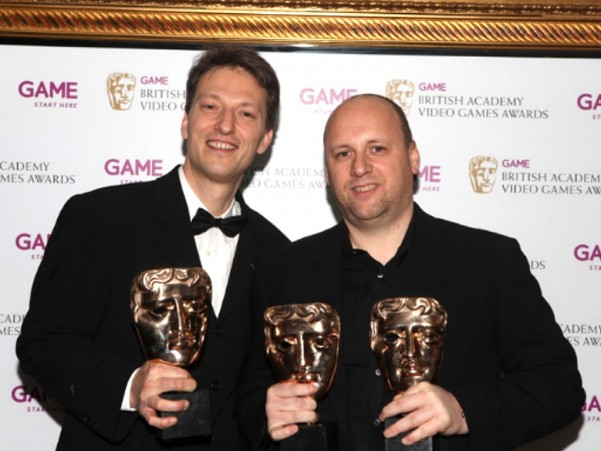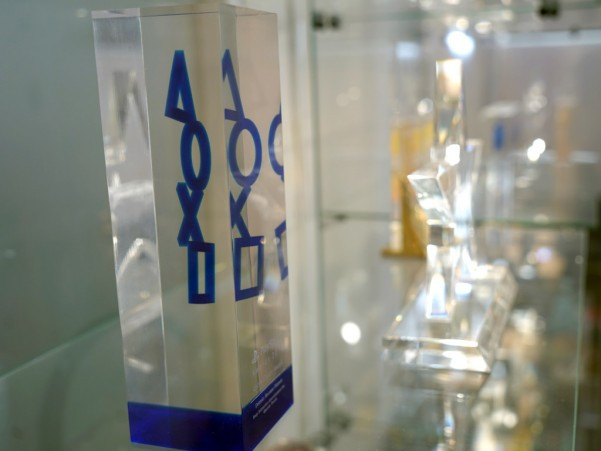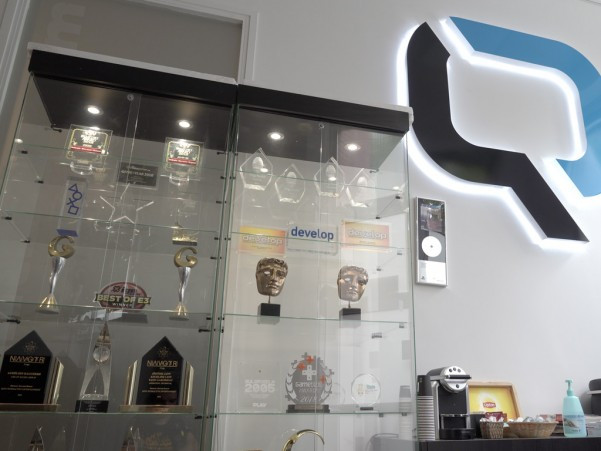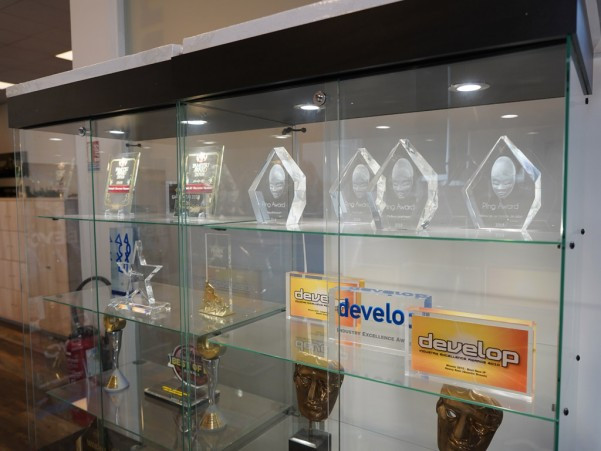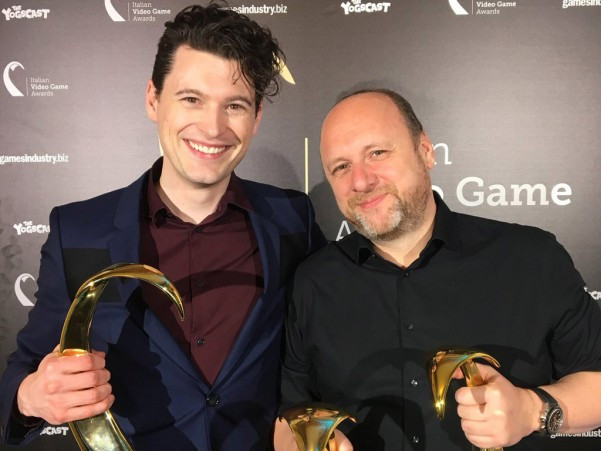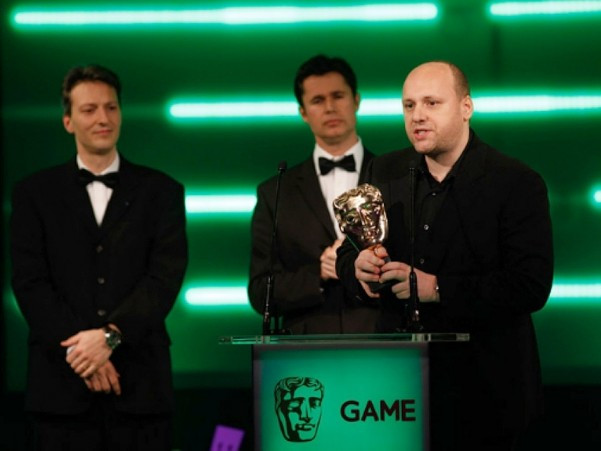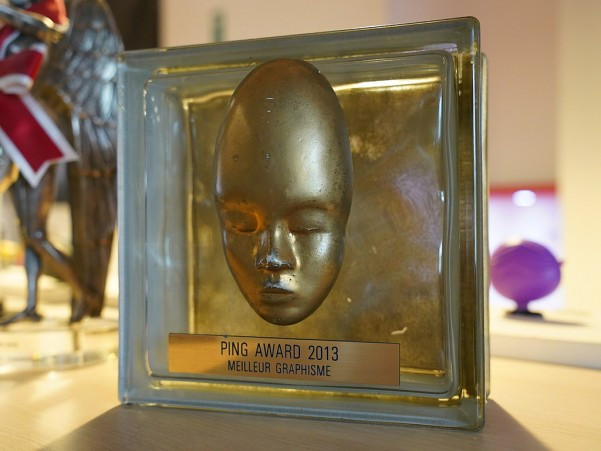OUR STUDIOS
Quantic Dream is a French video game developer based in Paris and Montreal, founded by David Cage in 1997. The studio creates AAA video games with singular identities, offering a different take on storytelling. Its signature Interactive Drama format offers multi-faceted stories that adapt in real time to the player's choices and decisions. The experiences imagined by Quantic Dream's teams are based on the company's innovative spirit, which has always developed its own engines and technologies.
In 2019, Quantic Dream is adding video game publishing to its development activities, bringing to PC its blockbuster titles originally published by Sony Interactive Entertainment on Playstation HEAVY RAIN, BEYOND: TWO SOULS and DETROIT: BECOME HUMAN. The latter title, originally released on Playstation 4 on May 25th, 2018, becomes in 2024 the studio's first global hit to surpass 10 million units sold worldwide.
In January 2021, another major milestone was reached with the creation of a new studio based in Montreal. This expansion of Quantic Dream will enable the recruitment of North American talents dedicated to the creation of new worlds, complementing the historical teams based in Paris. These two studios are not split up on a project-by-project basis: they form a single team.
On December 9, 2021, at The Game Awards ceremony in Los Angeles, the studio announces that it is working with Lucas Film Games on STAR WARS: ECLIPSE™, a new action-adventure game with complex ramifications and multiple playable characters, set in the High Republic era of the iconic Star Wars™ galaxy.
In July 2022, Quantic Dream is acquired by one of the world's leading video game groups, NETEASE, listed in New York (Nasdaq - NTES) and Hong Kong (HKEX: 9999). The studio retains its editorial independence and its management team.

Global stars from the film and music industries have collaborated on our works, including David Bowie, Elliot Page, Willem Dafoe, Jesse Williams, Lance Henriksen, Clancy Brown, Angelo Badalamenti and Hans Zimmer.
Quantic Dream currently employs over 400 professionals from all over the world. Its Paris premises include one of Europe's largest motion capture studios, a sound recording studio and a state-of-the-art photogrammetry laboratory. Quantic Dream's Montreal premises were inaugurated in spring 2021.
Quantic Dream is co-led by David Cage President and Creative Director on all our projects, and Guillaume de Fondaumière CEO and Head of Publishing.
They are supported by a management team composed of industry veterans:
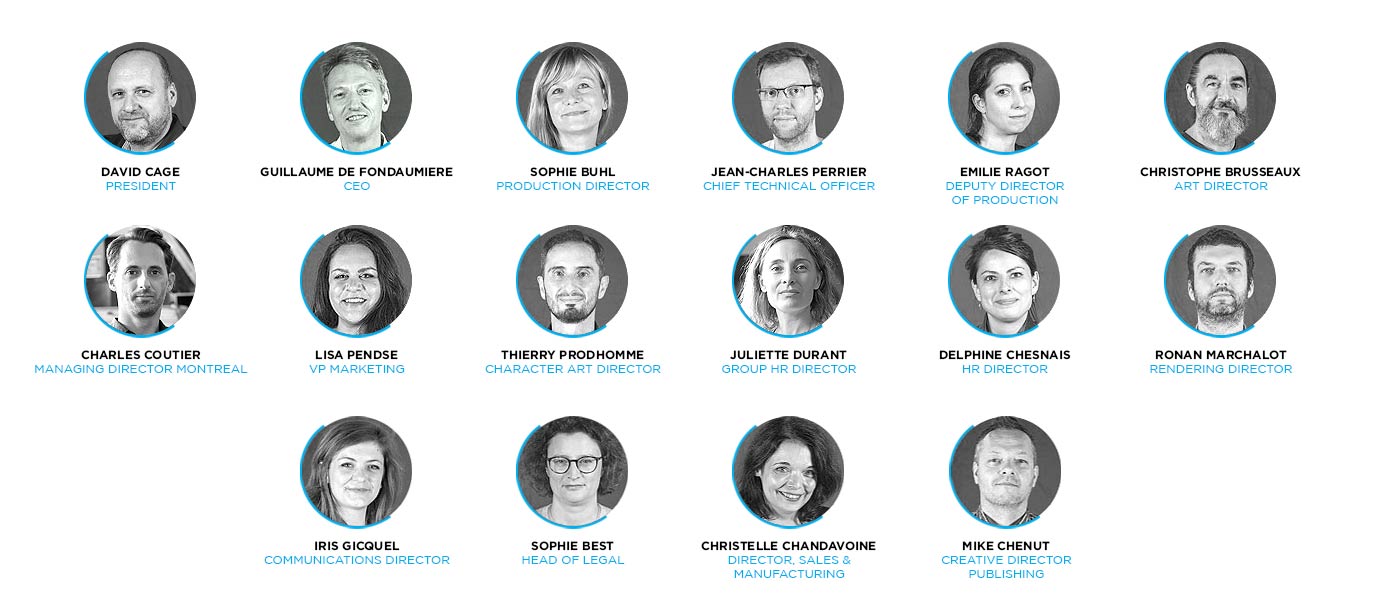
PUBLISHING
To regroup the publishing activities we started in 2019, we have created the label Spotlight by Quantic Dream. We draw our expertise in this area from two decades of close collaboration on our own AAA titles with the most prestigious publishers in the industry, and the experience of the seasoned professionals who have joined us along the way. Our ambition: to offer you unrivalled support in developing your game, and to publish your creations with the passion needed to ensure they reach players worldwide.
We offer fair agreements; for example, you retain the intellectual property rights to your creations. We also offer day-to-day support to your teams to help you to fully realise the video game of your dreams. Our experience as an independent developer means that we can collaborate closely with studios, providing the advice and resources they need to bring their visions to life. Our international talents then supervise the quality assurance and testing process, localisation, marketing, creation, communication, commercial development and legal services to broaden the global reach of your video game.
The same team, made up of industry veterans, also publishes our own games. Quantic Dream now reaches the world of the PC, consoles and mobiles.
Our services include:
• Positioning, marketing and strategies
• Public and press relations
• Localisation and QA
• Management of social networks
• Community development
• Partnerships with influencers
• B2B partnerships
• Digital marketing
• Media strategy
• Commercial development
• Legal assistance
MOTION CAPTURE
Welcome to one of Europe’s biggest and most technologically advanced motion capture studios, right in the heart of Paris.
Bringing realistic characters to life with real actors has been one of the founding principles of Quantic Dream’s storytelling. Created in 2000, our in-house film set enables our teams to achieve this by capturing each actor’s performance in the most minute detail. Transcribing the whole gamut of emotions in this way with absolute fidelity is what has made our games resonate with an ever-growing audience.
Equiped with 74 optical cameras, the studio can simultaneously record voices and facial and body movements. The ability to integrate a performance in a single take whilst remaining extremely faithful to it is essential to the creation of the hyper-realistic 3D characters which players expect nowadays in high-definition games and films.
Our infrastructure, experience and patented technology also offer shorter post-production times and a more natural and fluid performance, in particular for facial capture which is carried out without a cumbersome headset.
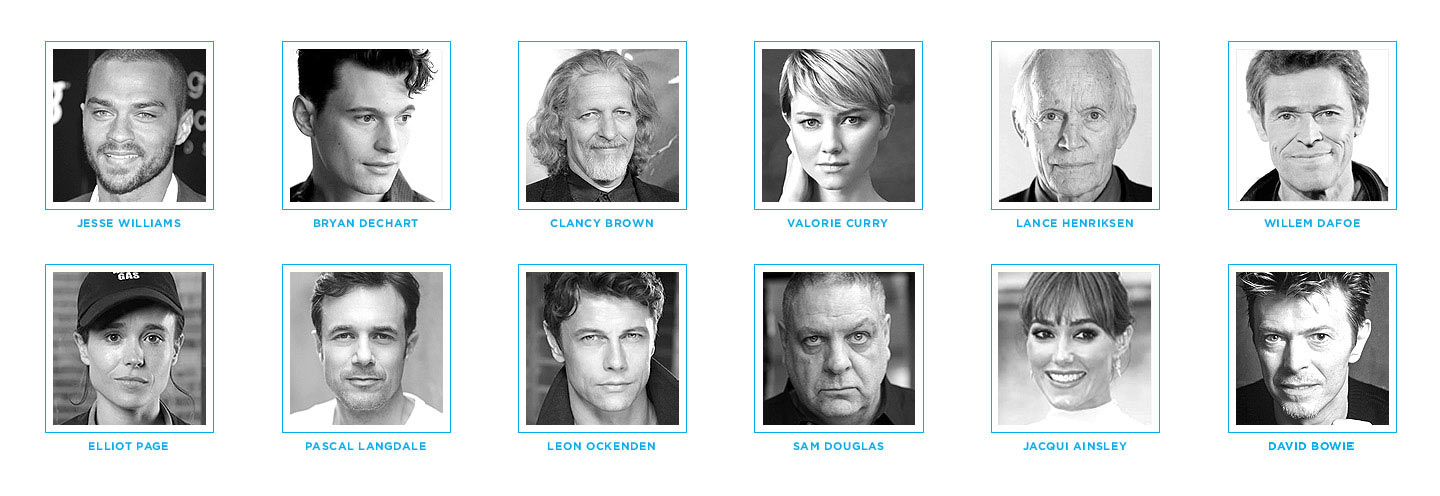
Discover the testimonies of those who embody our characters!
AVAILABLE FOR HIRE
Our clients include Ubisoft, UnitImage, Dontnod, Innerspace, Shaka Ponk, Osome Studio, Arkane Studios and more. Quantic Dream is delighted to work with studios and artists from around the world, offering motion capture services for a highly diverse range of projects.

Get in touch with us to see how Quantic Dream can bring your performance capture projects to life.
ITS ORIGINS
The name of the studio, Quantic Dream, comes from the term “quantum physics”, science with a touch of magic, combined with the word “dream” to represent creativity and imagination. While the word is “quantum” in English, changing it to “Quantic” reminds us of the French origins of the studio: a mix of science, technology and creativity based on the desire to create fresh new experiences. This is how David Cage, a composer and music producer, imagined the development studio which he set about creating.
The studio officially started life on 2nd May 1997 in a small apartment in the 15th district of Paris where a group of friends, and friends of friends, came together with the idea of creating a ground-breaking project: an action game/adventure taking place in a futuristic city à la Blade Runner, in which the playable character would be reincarnated in a new body if it came to game over.
Quantic Dream took a first gamble by releasing Omikron: The Nomad Soul, which quickly proved a winner. With its inspired story and a universe blending thriller, new age spirituality and science fiction, enhanced by the sumptuous soundtrack by David Bowie and Reeves Gabrels, this first original creation was a hugely successful entry by the studio into the video games industry and public awareness. It was an artistically and technologically mammoth project: although real-time 3D was still in its infancy, the studio’s aim was to create an entire city, with its neighbourhoods, passers-by and anti-gravity vehicle traffic, and to offer the possibility of freely exploring every corner and every building. The project was quite simply to create one of the very first real-time 3D cities in video gaming. This was also the project which drove Quantic Dream to experiment with motion capture, an avant-garde technique originating in the medical world and at the time rarely used in video games: it consists of filming actors and then rendering their movements onto digital characters. Having become a central character in the adventure, David Bowie brought Reeves Gabrels and the bass player Gail Ann Dorsey into the adventure; images of them were captured in the real world to become avatars in the virtual world of Omikron, resulting in the first virtual concert in video game history. The studio also collaborated with Olympic martial arts champions for the action sequence movements, and filmed dozens of actors and actresses to bring each character to life. The quantic dream machine had lift-off!

By the time Omikron: Nomad Soul was released in 1999, Quantic Dream had learned a lot; and the question arose of “what next”? Should there be a sequel, or would it be better to go down a radically different path? For several months the studio researched, experimented by recreating sequences from famous films to understand what creates emotion, what the desire for realism involves, and how to engage players. Prototypes recreating scenes from the Matrix or the films of Alfred Hitchcock in real-time 3D were developed in an effort to find the answers.
The idea of interactive narrative then emerged gradually: would it be possible to create an experience based chiefly on the choices made by players and their consequences? That was the gamble with Fahrenheit: Indigo Prophecy, with its three playable characters and its film noir universe.
At the start of the 21st century, Quantic Dream acquired its own film set linked to a professional studio. Technological exploration continued with a new system of facial animation and a method for filming in real-time 3D, alongside other innovations. This new game development was also to benefit from the multiview process, i.e. the opening of several windows in parallel.
At its release in 2005, Fahrenheit: Indigo Prophecy provided an option for following the adventure through opposing viewpoints, and added a degree of freedom in the twists and turns of a storyline with several outcomes. With its cinematographic language, multi-character narration and its “gauge of mental health”, Fahrenheit: Indigo Prophecy got noticed as soon as it was released, due to its originality and unique approach of interactive narration.
With this game the studio had found its direction, and had the technology to forge ahead, paving the way for a collaboration with Sony PlayStation in the decade ahead.

THE PLAYSTATION YEARS
As at the end of every development, Quantic Dream resumed its experimentation, improved its techniques and tools, then started again from scratch: first, a prototype in the form of a short film on the role of the actor was made. Heavy Rain: The Casting is the story of an actress who is transformed through her performance in front of the camera. New techniques were developed to recreate these virtual actors, to capture the subtleties of their acting, and improve the rendering of their eyes, skin and tears. Sony took the project to the Electronic Entertainment Expo (E3) in Los Angeles in 2006, paving the way for the studio’s next game which was to have a profound impact on its history: Heavy Rain.
As one of a group of studios tackling photorealism, Quantic Dream created Heavy Rain in 2010; building on its two previous productions, the studio’s narrative signature was reaffirmed by allowing players to make decisions which influence the storyline. With 23 possible endings, uncompromising production values, a dark ambiance and subject-matter rarely tackled in video games, Heavy Rain aimed to stir feelings not usually associated with game playing. More than 6 million copies were sold and the game garnered dozens of international awards, acknowledging the technical audacity and unique style of this ground-breaking different experience.
The release of a game triggers a new research phase for the team, away from the public eye. This time Quantic Dream delved into performance capture, with which detailed data is captured simultaneously from an actor’s body, face and voice, to closely render subtleties of expression. Two years passed before Quantic Dream returned to the spotlight: now considered to be a major voice in the industry, the studio took the opportunity of the 2012 Game Developers Conference (GDC) to unveil something new: a second short fully produced in the game engine developed by the studio. Actress Valorie Curry plays Kara, an android with consciousness, initially created as a technological design study, and who unwittingly foreshadowed by 6 years the basis for Detroit: Become Human. The production used dozens of new Vicon cameras acquired for the film set and made a deep impression throughout the video gaming world.
In 2013 Quantic Dream presented its latest advances alongside Sony at the GDC, in the form of a face animated in real time by PlayStation 4. In parallel, behind the scenes, the studio was working on a third short. The Dark Sorcerer, unveiled a few months later at Sony’s E3 conference, illustrated the capabilities of the upcoming new generation of consoles. The film pits an inept sorcerer against a larger-than-life goblin in a grotesque demonstration of the dangers of magic. Behind the comedy, there is a real technological achievement, raising the bar in terms of realism in the animations, acting and lighting.
In October 2013, Quantic Dream and Sony PlayStation published Beyond: Two Souls. Still exclusive to PlayStation 3, the adventure is driven by the Dante-esque work of a Hollywood cast list centred around the duo played by actors Elliot Page and Willem Dafoe. Evolving on the fringes of the well-trodden paths of traditional triple-A productions, Beyond: Two Souls is a truly personal and independent production with a blockbuster flavour; it even became the first video game to be included in the official selection of the Tribeca Film Festival 2013, marking a major first for video games. Like the studio’s previous efforts, Beyond: Two Souls tackles subjects still barely considered in video games: the right to be different, self-acceptance, the limits of science, death and the afterlife, in what is probably David Cage’s most personal work.
On the back of an extraordinary performance by Elliot Page in the role of Jodie Holmes, the game enjoyed considerable success with players touched by the story of this character searching for answers to their own identity; it also confirmed the relevance of the collaboration between Quantic Dream and Sony Computer Entertainment, soon to be supplemented by a third and last mammoth project.
Released in Spring 2018, Detroit: Become Human rapidly became the most popular game in the studio’s history, in terms of both critical acclaim and commercial success. Spread over more than 4,000 pages, the script intertwines reflections on artificial intelligence, free will, discrimination and the right to be different. The adventure is all the more impressive for again pushing back the limits of interactive narration and cinematography applied to this medium, with around forty possible endings and hundreds of combinations to be discovered, enabling each player to tell their own version of the story. Supported by colossal performance capture sessions, Kara, Markus and Connor’s quest for emancipation made Detroit: Become Human the cornerstone of Quantic Dream’s 20 years of game experiences. In 2020 worldwide sales of the game since its release passed the 5 million mark, and then the 8 million mark in 2023, on PS4 and PC.
QUANTIC DREAM 2.0
With its development effort boosted, in 2019 the studio began its transformation to independence when it started to finance and publish its own productions thanks to the investment by NetEase, news of which was announced by a message from android Chloe. Quantic Dream released its latest three games on PC immediately afterwards and announced the publication of titles created by other independent studios. For this new activity, the studio offered to share its experience and technical installations whilst financing and publishing the titles. The editorial policy is to help independent organisations and creators working on original concepts bring their visions to fruition in a balanced and ethical collaboration.
It is within this framework that the first third party games were formalised: Sea of Solitude: The Director’s Cut (Jo-Mei), released on 4th March 2021 on Nintendo Switch, Dustborn (Red Thread Games) and the new project from Parallel Studio, two games currently under development, on all platforms.
For its next chapter, Quantic Dream opened a studio in Montreal in 2021. This was a completely logical development to allow international talent on both sides of the Atlantic to strengthen the team. Between Paris and Montreal, a “one team, two studios” philosophy gives Quantic Dream the opportunity to write the next major pages of its story.
On 9th December 2021, at the Game Awards, Quantic Dream unveiled the teaser for a new project under development: Star Wars Eclipse. By creating for the first time a game based on an existing franchise, Quantic Dream has embarked on the most ambitious production in its history, aiming once again to create a unique experience.
Quantic Dream will celebrate its 25-year anniversary on 2nd May 2022.
AWARDS
From Omikron: The Nomad Soul in 1997 to Detroit: Become Human in 2018, Quantic Dream has won multiple awards for its creations, hailed by critics and the general public alike. The studio has racked up more than 250 prestigious nominations and prizes in various categories, with awards for narration, innovation, technique, artistic direction, lighting and soundtrack.
The studio’s international accolades include in particular trophies decided by professional panels at prestigious events such as the D.I.C.E. Awards, the BAFTAs, the Ping Awards, the Tokyo Games Show, the NAVGTR Awards and SXSW.
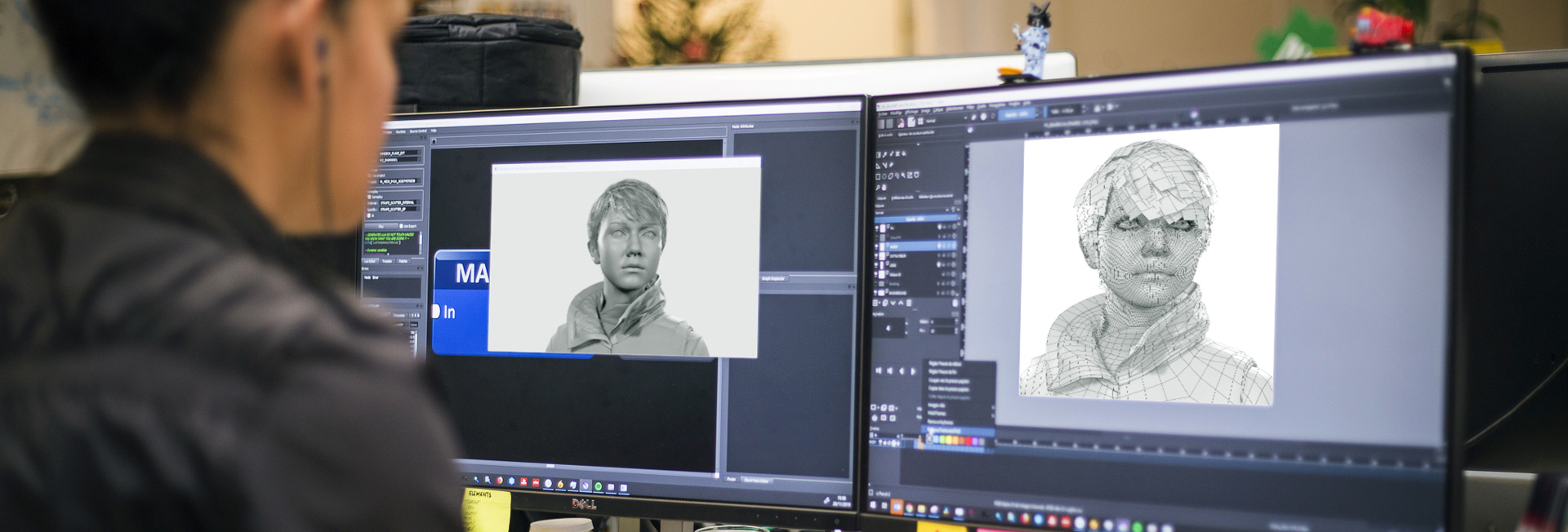 <
<
